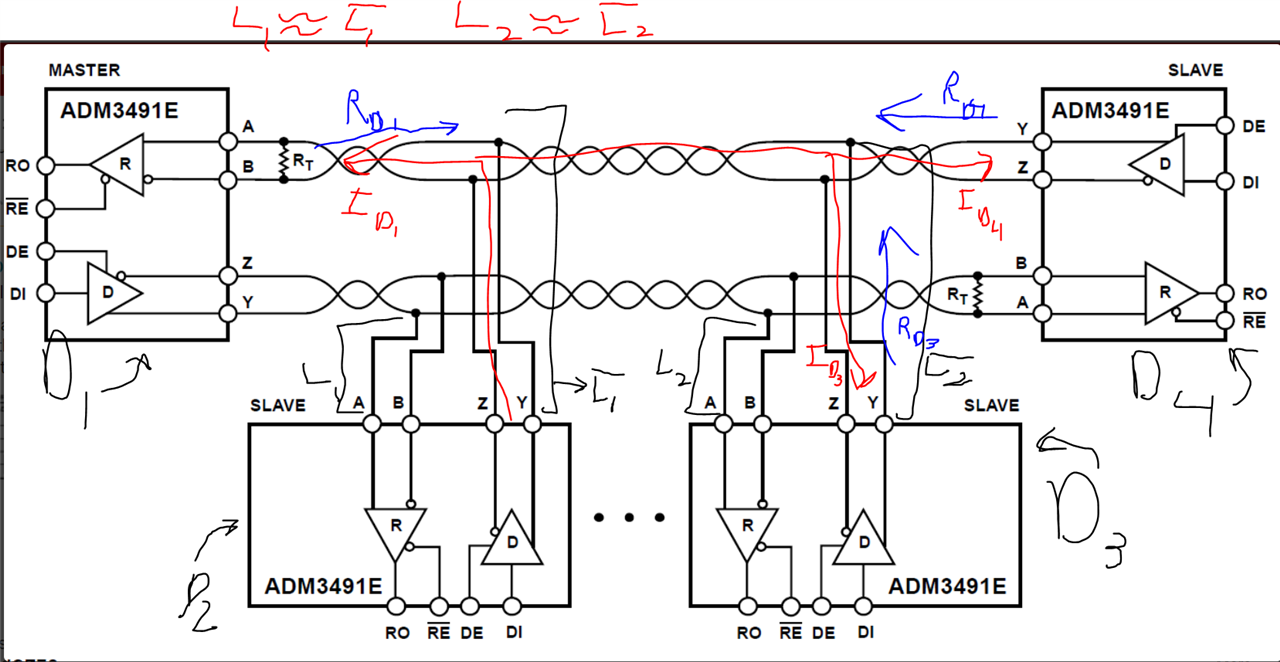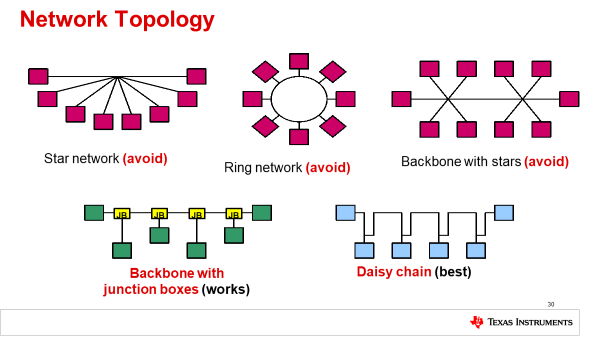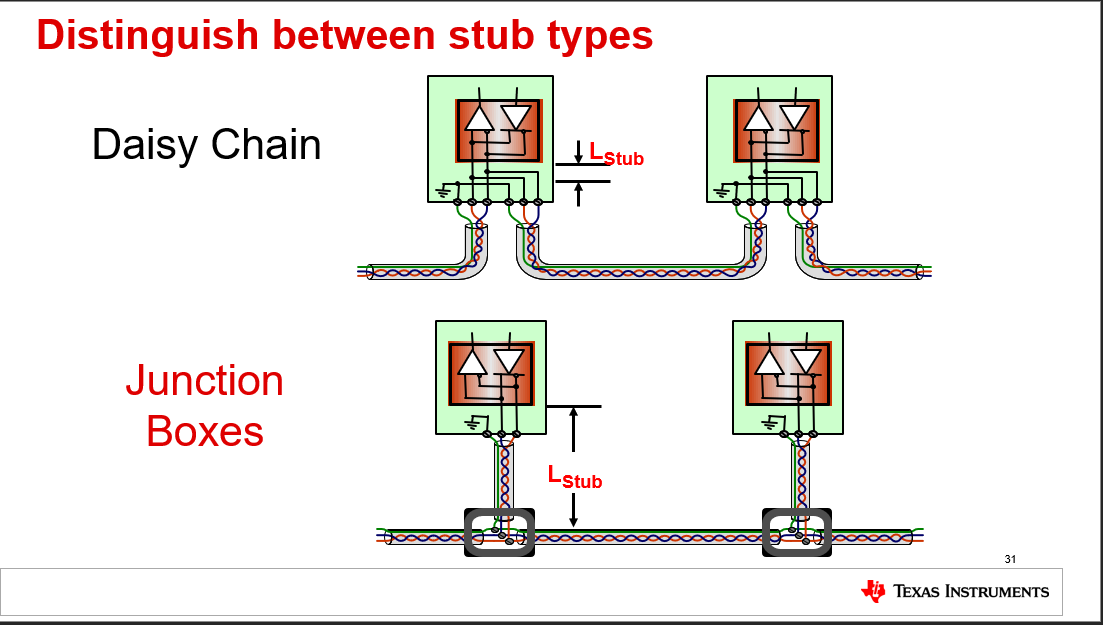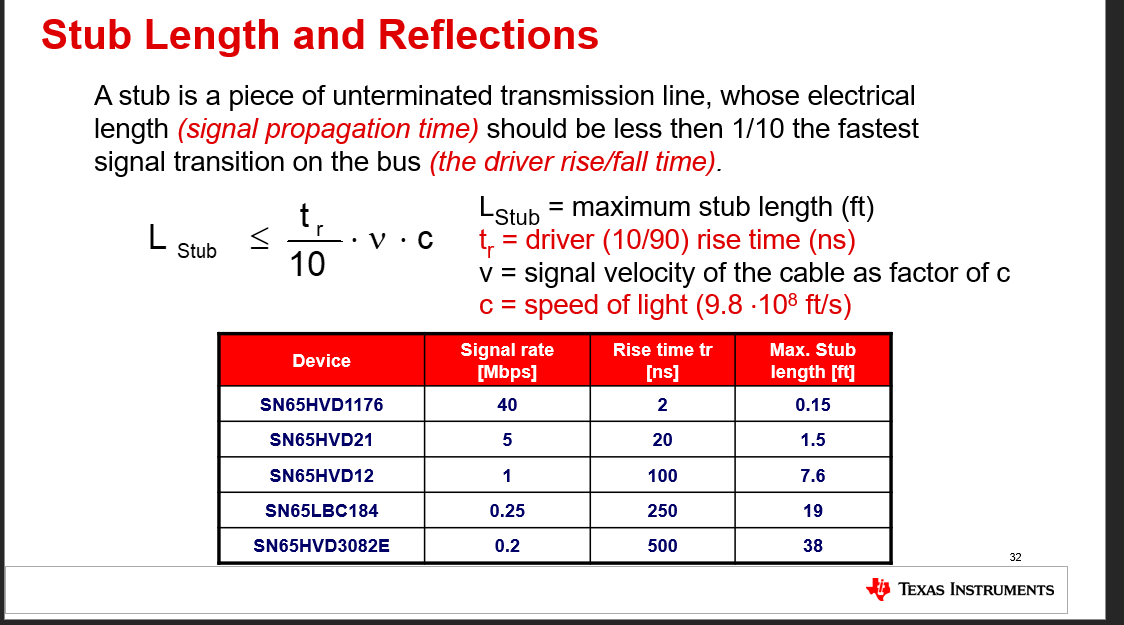Hello,
The customer is looking at page 18 of the THVD1512 data sheet, Figure 23. Typical RS-485 Network With Full-Duplex Transceivers.
The master is connected to two slaves.
One of the slaves has a termination resistor RT connected, but the other slave has no termination resistor RT.
Is termination unnecessary?
Best regards,
DDdoor





